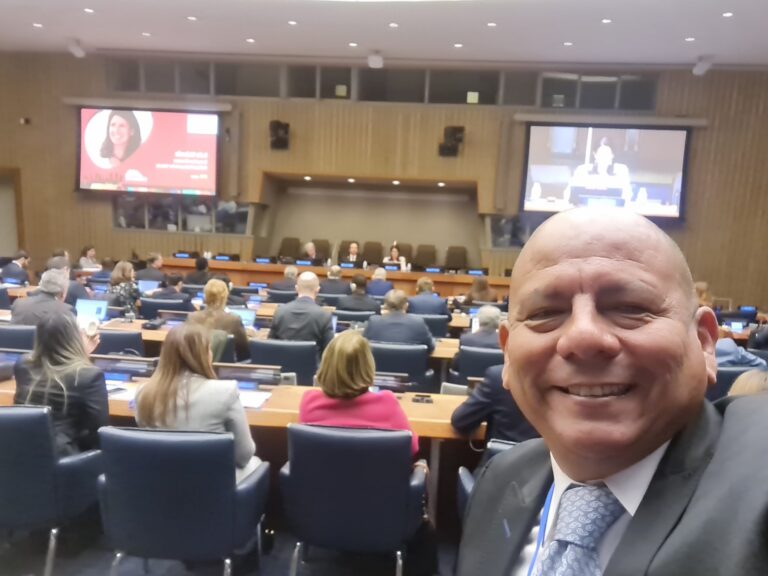In the Spring of 1988, officials with the US Department of State knew they had a problem. For almost 20 years, the US government had tried to build a network of “family planning” services in oil-rich Nigeria, black Africa’s most populous state. And they understood that nothing had the potential to kindle suspicion or inflame controversy so much as a US-sponsored campaign to reduce Nigerian births.
On the table sat the blueprint for an externally funded population control program in Nigeria, a huge green-covered two-volume document the size of a couple of big city telephone directories. The final version, dated 9 July 1987 and designated “unclassified,” described the soon-to-be-implemented plan as “a major, innovative, and far-reaching endeavor designed to increase the acceptability and the practice of family planning by approximately four fold in the most populous country of Africa.” Its initial goal was to recruit 2.5 million committed contraceptive users within five years. “At the end of the five-year project,” it added, “80 percent of the population aged 15–45 will be informed of family planning concepts. Hopefully, smaller family norms will result.”
The Family Problem
The document also acknowledged the enormous obstacles that stood in the way of the bold attempt to bring down Nigerian birthrates. Fertility surveys suggested that the average Nigerian woman was likely to give birth to between six and seven children during her reproductive lifetime. But there was no sense of having “too many” children in Nigeria. On the contrary, the same research demonstrated that the average woman wanted between eight and nine children. In other words, a successful program of birth planning based solely on the “free choice” of the Nigerian woman would result in nothing less than a 33 percent increase in the national fertility rate.
The preference for large families runs deep in the culture, to the extent that the celebration of fertility is “ingrained in many rituals of life and even in daily greetings,” in the words of an appendix to the 1987 document. “Nothing is more rewarding to most Nigerian women than to bear and raise children. Nothing can give a Nigerian man more pride than to be surrounded by an admiring crowd of family and children. They are not just a sign of his wealth and power, they are his wealth and power.”
And US officials warned that political sentiments were equally unfavorable. “The political furor surrounding censuses in Nigeria reflect some of the political obstacles to family planning,” it noted. “Political groups, regions, and ethnic groups and religions vying for position all want to be numerous.”
Finally, more than half of Nigeria’s people adhere to orthodox Islam, and a substantial portion of the rest are Roman Catholics, meaning that the huge majority of Nigerians also reject western birth control methods on moral and religious grounds. In fact, a pair of World Bank consultants found that opposition to western birth control programs spanned the religious spectrum.
“African governments have given either no leadership or uncertain leadership to family planning programs,” said the World Bank advisors, because those embracing such activities in the past “have repeatedly been attacked on the grounds that population programs are a form of foreign intervention and that they are imperialist, neo-colonialist plots to keep Africa down.” But even more to the point, the authors of the Bank study concluded, was the fact that “politicians, civil servants, and political activists all feel that the programs may run counter to the basic spiritual beliefs and emotions of African society.”
Regardless of the fact that population control would offend the “spiritual beliefs and emotions” of the Nigerian people, notwithstanding its obvious conflict with the personal wishes of the country’s women, and despite widespread political and moral objections, the US government was determined in 1987 to take advantage of a rare opportunity to force Nigeria’s leaders to yield to a western-dictated population policy.
Forming the policy
A population policy is any official position taken by a government that calls for intervention to influence population trends. Some European countries have tried population policies that are meant to increase fertility. Developing nations, on the other hand, have been urged to declare their own rates of growth excessive and to officially sanction projects to decrease the number of births. Virtually no country has done so, however, without the encouragement of leaders in the industrial world.
In Nigeria, as in almost every other part of the developing world, numerous attempts had been made over the years to deliver birth control services. A Family Planning Council was set up under British colonial administration in the late 1950s, and funds from the London-based International Planned Parenthood Federation (IPPF), the Population Council in New York, the Ford Foundation, and the US Agency for International Development (AID) all went into early efforts to popularize contraceptives. But absent a government policy explicitly favoring such activities, the clinics were little more than odd specks on the landscape that served to symbolize what Nigerians saw as the white world’s eccentric ideas about childbearing. Birth rates remained high and, following a 1970s oil boom that gave a huge boost to the national economy, they went even higher.
Efforts to get the government to adopt a population policy began early, as well. A directory of AID’s population assistance programs published in September 1968 noted conferences to discuss population issues, scholarships for Nigerian students of demography, and a survey of population growth rates done under the auspices of the United Nations. But the effort was in large measure futile.
Opponents of population control “range from the Catholic Church … to the commissioner of economic development,” said a 30 March 1972 cable from the US Embassy in Lagos to Washington, which added that the Nigerian people “question the motives of externally supported family planning programs, and dismiss birth control as alien to Nigerian values.”
By the mid-1970s, the World Bank, created at the end of World War II to finance the reconstruction of western Europe, had become a major source of development funds for the Third World. And with its leverage over fragile developing economies came the ability to negotiate domestic policies. The premise was simple: any country wishing to borrow from the Bank was required, as a condition of credit, to present a realistic plan for economic development.
The World Bank is firmly under the control of the executive branch of the US government. At the time of its founding at the 1944 Bretton Woods conference, a special division was created at the Treasury Department to oversee its activities. That bureau, the National Advisory Council on International Monetary and Financial Policies (“the NAC” to insiders), monitors US investments in global lending institutions to ensure they are sufficient to maintain a dominant position. At the same time, the NAC is responsible for working with an inter-agency task force to make certain that policies at the Bank reflect those of the US government.
Money to push the issue
It was probably inevitable that American leaders would tum to the World Bank as a tool to force population policies on borrowing countries. By the mid 1980s, Nigeria’s economy had become stagnant. The long-awaited opportunity had arrived.
Bank officials had successfully imposed population policies on other African nations as a requirement for development funds and, according to literature published by the Bank, it “helped lay groundwork for policy formation” in Nigeria as well.
In a November 1990 internal working paper called “The World Bank’s Role in Shaping Third World Population Policy,” authors Fred T. Sai, former head of IPPF, and Lauren A. Chester wrote,
Policy development is a complex and sensitive process. Efforts and techniques used to influence policy must be adjusted to be appropriate to the size, setting and political, social, and economic environment of each country. One of the Bank’s major strengths is influencing policy development through policy dialogue. This encompasses a wide range of activities: informal and formal discussions with government officials and pertinent program managers regarding population policy issues, population project design and implementation, sector and economic work, and the participation of high level government officials and managers in Bank-sponsored seminars.
Propagandize
Nigeria, however, was a special case that required considerable effort. Besides recruiting “Nigerian consultants” who were paid with Bank funds, AID brought in a special team from the Futures Group, a government contractor that works primarily with the Pentagon. Futures, along with the Bank’s mercenaries, trained still more Nigerian population “experts” who, in turn, were assigned the task of explaining to government officials, religious leaders, and other influential persons “why the government was developing a population policy.” All of this, Sai and Chester wrote, “helped pave the way for eventual approval of the policy.”
The policy itself was presented to officials as a supplement to an existing “‘national health policy” in Nigeria. It simply required that “family planning” be included in the health program. And “family planning” was presented to the Nigerian government, according to the 1987 State Department program paper, as a service to help couples “achieve their wishes” with regard the prevention of “unwanted pregnancies,” to assist them in “securing desired pregnancies,” and to educate them about the “spacing of pregnancies” and limiting family size “in the interest of family health.” The representation to Nigerian leaders specified, too, that the methods provided would be “compatible with [Nigeria’s] culture and religious beliefs.”
In reality, such language so grossly misrepresented the program that, under legal standards in the US, it might be considered fraud. The 1987 project authorization listed a huge array of program activities that went far beyond what was culturally acceptable or permissible on religious grounds, and was completely at odds with the concept of helping people “achieve their wishes” about reproduction. Moreover, no effort was ever directed toward helping Nigerians who had trouble conceiving.
Among other things, the 1987 project paper called for a massive propaganda offensive that involved the infiltration of the mass media, commercial entertainment, news agencies, and traditional gatherings. It called for the production and dissemination of no less than “‘3,000 television, radio, film, and folk media programs and spots, and newspaper and magazine inserts in at least five languages.” It also included the planning and execution of scores of “orientation symposia” for influential public and private sector leaders; the recruitment and training of thousands of “motivational agents” to advocate birth control; workshops and ideological guidance for educators; conferences and scholarships for journalists, publishers, playwrights, and film makers, and much more. Among other things, family planning messages were to be integrated into “existing popular radio and television series,” as well as “variety shows and soap operas.” New programs would be created and funded. Testimonials would be solicited from “traditional and religious leaders” and aired through local media outlets. Music was to be recorded for commercials with lyrics countering prevailing pro-natalist opinion. And organizations were to be formed and secretly financed to give the appearance of “policy support” at the grassroots level.
All of this was to be backed up with audience surveys, focus group studies, and “anthropological research” so as to “to convince the greatest number of people” to practice family planning and create “a positive public atmosphere for the population program.” And above all, these activities were to be done in a way that disguised the role of the United States, leaving the bewildered Nigerians to think that the onslaught of propaganda represented nothing more than a spontaneous change in local opinion.
The population policy officially took effect in April 1988. The US Government, through the Agency for International Development, kicked in $67 million for the program. The World Bank between 1987 and 1990 committed a little more than $95 million. And enormous amounts came from various United Nations specialized agencies, from other developed country governments, and from private foundations and corporations.
This extraordinary attempt to submerge indigenous culture could only be expected to produce decisive changes in custom and lifestyle. But from the beginning the program was so plagued with defections, corruption, and scandal that it ultimately collapsed. General Ibrahim Babangida, the Nigerian president who ultimately approved the population policy, stepped down in November of 1993. Mohammed Sani Abacha replaced him. And one of Abacha’s first acts as head of state was to trash the detested bilateral population agreement with the United States.
Upon Abacha’s sudden death in June of this Year, Major General Abdusalam Abubakar succeeded him as head of state. And with the demise of popular politician and businessman Moshood Abiola a month later, the situation in Nigeria grew increasingly tense and uncertain. While the political environment is hardly yet ripe for renewed intervention, the nation is almost certainly becoming more vulnerable.
Elizabeth Liagin has spent many years covering and living in Africa. She is a regular contributor to the Information Project for Africa, a journalistic cooperative.










